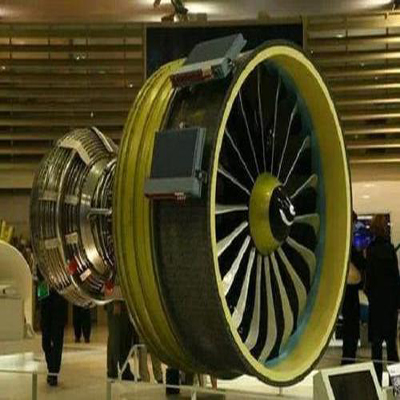Silicon carbide ceramic properties
Silicon carbide ceramics have high hardness, high melting point (2400℃), high wear resistance and corrosion resistance, as well as excellent oxidation resistance, high temperature strength, chemical stability, thermal shock resistance, thermal conductivity and good air tightness. And so, it has been widely used in energy, metallurgy, machinery, petroleum, chemical, aviation, aerospace, defense and other fields.

Black silicon carbide and green silicon carbide:
The abrasive industry habitually divides silicon carbide into black carbonized laurel and green silicon carbide according to color, both of which are hexagonal crystals, and all belong to α-SiC.
Black silicon carbide contains about 98.5% SiC. Black silicon carbide is made of quartz sand, petroleum coke and high-quality silica as the main raw materials, and is smelted by electric furnace at high temperature. Its hardness is between corundum and diamond, the mechanical strength is higher than corundum, and it is brittle and sharp. Its toughness is higher than that of green silicon carbide, and it is mostly used to process materials with low tensile strength, such as glass, ceramics, stone, refractory materials, cast iron and non-ferrous metals.
Green silicon carbide contains more than 99% SiC. Green silicon carbide is made of petroleum coke and high-quality silica. It is added with salt as an additive and is smelted by high temperature furnace. It is self-sharpening and is mostly used for machining hard alloys, alloys and optical glass. It is also used for wear-resistant cylinder liners and fine-grained high-speed steel tools.

Silicon carbide ceramic use:
The strong covalent bond of SiC is the root cause of a series of excellent properties of SiC ceramics, but it also brings difficulties in sintering. The covalent bond is too strong, which hinders the sintering densification of SiC ceramics. For this reason, the sintering temperature has to be increased. , which increases the cost and limits its application in industry.
From the point of view of thermodynamics, the reduction of free energy caused by the agglomeration of the original powder during sintering is the main driving force for densification. However, the free energy of the SiC grain boundary is relatively high, resulting in a decrease in the free energy of the powder even if the agglomeration becomes a solid-solid interface from the solid-gas interface. The smaller the free energy difference is, the smaller the driving force of the sintering process is. Therefore, the SiC powder is more difficult to be sintered than other ceramics. The current common method is to add sintering aid, reduce the original powder particle size and pressurize. Change its free energy and promote the densification of SiC.
From the perspective of kinetics, the main mass transfer mechanisms in the sintering process are: evaporation and condensation, viscous flow, surface diffusion, grain boundary or lattice diffusion and plastic deformation. The strong covalent bond of SiC leads to slower solid-phase mass transfer rate such as lattice diffusion and surface diffusion, while gas phase mass transfer requires high temperature to promote powder decomposition. The decomposition temperature of SiC is up to 2500 °C, so relying on gas phase mass transfer to realize ceramics Densification is impossible. Therefore, the existing sintering process mainly achieves the viscous flow by adding a sintering aid to increase the solid phase diffusion rate of SiC or to form a viscous liquid glass phase-assisted SiC.

SiC ceramics are highly pure and can increase the thermal conductivity of SiC ceramics without other impurities. However, in the sintering process, sintering aids must be introduced to reduce the sintering temperature and increase the density. How to solve the contradiction between the two is the sintering of high thermal conductivity SiC ceramics. Difficulties and priorities.
Al2O3 ceramics have relatively low sintering temperature, low cost and good electrical insulation performance. They have been widely used, but their thermal conductivity is low, and their application in high-power circuits is limited.
BeO ceramics have good dielectric properties and are used as high-heat-conducting substrate materials in some fields. However, due to the toxicity of BeO, Europe, the United States, Japan and other places have begun to issue regulations restricting the sales and development of electronic products containing BeO.
AlN ceramics have excellent thermal and electrical insulation and low dielectric constant, making them suitable for high power circuits. However, the sintering temperature of AlN ceramics is too high, resulting in a complicated preparation process and high cost, and has not been subjected to large-scale production and application. And AlN is prone to hydrolysis reaction, and its reliability is poor in wet environments.
SiC ceramics have low density, high mechanical strength, good oxidation resistance, wear resistance, excellent thermal shock resistance, small thermal expansion coefficient and high thermal expansion coefficient matching with the chip. They are resistant to chemical corrosion and have good development in the field of electronic products. And the application prospects can meet the requirements of high performance, small size, light weight and high reliability of electronic devices in the future.
Luoyang Trunnano Tech Co., Ltd (TRUNNANO) is a professional Silicon carbide ceramic manufacturer with over 12 years experience in chemical products research and development. If you are looking for high quality Silicon carbide ceramic, please feel free to contact us and send an inquiry.


